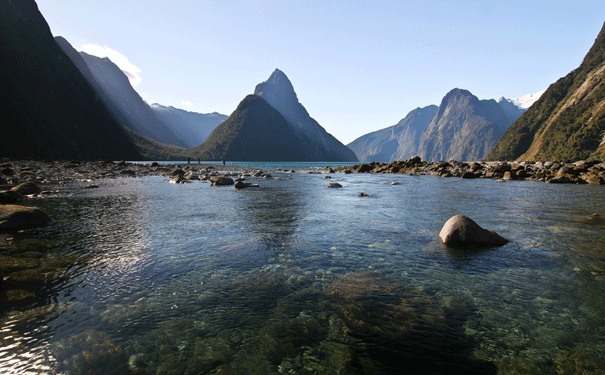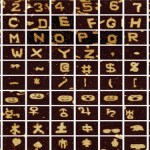
Milford Sound, located in Fiordland in New Zealand's South Island. Image: Shutterstock.
What did the alpine landscapes of New Zealand look like before glaciation began?
2.5 million years ago, the world cooled and glaciers began to form and sculpt their valleys, such as Milford Sound in New Zealand. But what the landscape looked like before glacial activity has puzzled scientists, as the glaciers tend to erase all evidence.
Scientists from University of California, Berkley, have used a new technique, called helium-4/helium-3 thermochronometry, to reconstruct an area of New Zealand’s Fiordland from the early Pleistocene to the present interglacial period.
This technique enables scientists to determine the temperature of a mineral over geological time and how deeply it was buried, as temperature increases with depth. To do this, the geologists measure the total amount of uranium, thorium and helium-4 in the rock crystals, before irradiating it with a proton beam to create helium-3.
They then measure the outgassing of both helium isotopes and calculate temperature based on the helium diffusion rate. David Shuster from UC Berkely, who developed this technique, said in the press release “the technique allows us to collect samples from the present surface and, based on observations, infer how they cooled through 80 degrees Celsius to 20 degrees Celsius… over the last few million years, and thus, how deep they were when they cooled.”
From the samples taken from the Fordland area, the scientists concluded that most of the activity initially occurs at the mouth of the glaciers, as they scoured the U-shaped valleys, before eroding their headwater regions. Glaciologist Kurt Cuffey from UC Berkeley explained in the press release “Apparently, the heads of glaciers would be directly opposite one another on either side of a high ridge, and faster erosion at the headwalls caused the glaciers to eat their way inward to the spine of the mountain range, farther from the glacier’s outlet.”
Rock erodes faster when the ice is sitting on a steep slope, so the erosion rate is highest where the ice descends steeply. “This scenario is consistent with a subglacial erosion rate dependent on ice sliding velocity, but not ice discharge,” Shuster said.






